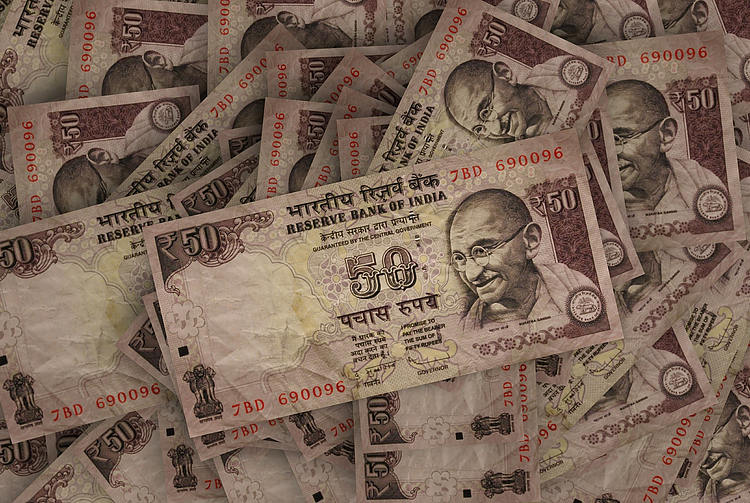- Indian Rupee trades in negative territory in Monday’s Asian session.
- The USD month-end flows and potential RBI intervention underpin the pair.
- Investors will monitor the Fed’s Bowman speech on Monday.
The Indian Rupee (INR) weakens on Monday, pressured by month-end US Dollar (USD) demand from importers and likely interventions by the Reserve Bank of India (RBI). However, strong inflows and lower crude oil prices might help limit the INR’s losses.
Investors will focus on Fed Governor Michelle Bowman’s speech on Monday, which might offer some insight and outlook on the US interest rate. Also, the Chicago Purchasing Managers’ Index (PMI) and Dallas Fed Manufacturing Business Index will be released. On the Indian docket, the August Federal Fiscal Deficit is due later in the day
Daily Digest Market Movers: Indian Rupee softens as USD demand weighs heavily
- The Indian rupee has remained largely stable against the USD in the current calendar year (CY 2024), depreciating by just 0.59% so far.
- Chief Economic Advisor (CEA) V Anantha Nageswaran said on Friday that the Indian economy is estimated to grow at a rate of 6.5-7% in the current financial year on a steady-state basis.
- The Personal Consumption Expenditures (PCE) Price Index rose by 2.2% year-over-year in August, compared to 2.5% in July, the US Bureau of Economic Analysis (BEA) showed on Friday. This figure was softer than the estimates of 2.3%.
- The core PCE, which excludes the more volatile food and energy prices, climbed 2.7% YoY in August, compared to the previous reading of 2.6%, in line with the consensus of 2.7%. On a monthly basis, the core PCE Price Index increased by 0.1% in the same report period versus 0.2% prior.
- University of Michigan’s Consumer Sentiment Index rose to 70.1 in September from 66.0 in August, better than the estimates of 69.3.
- Interest rate futures contracts have priced in a nearly 54% chance of a half-point cut in November, versus a 46% possibility of a quarter-point cut, according to the CME FedWatch Tool.
Technical Analysis: USD/INR tests rectangle pullback, success could see upward resumption
The Indian Rupee trades softer on the day. According to the daily chart, the constructive bias of the USD/INR pair persists as the price holds above the key 100-day Exponential Moving Average (EMA). However, further downside looks favorable as the RSI is located below the midline near 46.60.
The support-turned-resistance level at 83.75 acts as an immediate resistance level for USD/INR. Further north, the next upside barrier emerges at the 84.00 psychological mark.
The potential support level is located at the 100-period EMA at 83.62. Any follow-through selling below this level will see a drop to 83.00, representing the psychological level and the low of May 24.
Indian Rupee FAQs
The Indian Rupee (INR) is one of the most sensitive currencies to external factors. The price of Crude Oil (the country is highly dependent on imported Oil), the value of the US Dollar – most trade is conducted in USD – and the level of foreign investment, are all influential. Direct intervention by the Reserve Bank of India (RBI) in FX markets to keep the exchange rate stable, as well as the level of interest rates set by the RBI, are further major influencing factors on the Rupee.
The Reserve Bank of India (RBI) actively intervenes in forex markets to maintain a stable exchange rate, to help facilitate trade. In addition, the RBI tries to maintain the inflation rate at its 4% target by adjusting interest rates. Higher interest rates usually strengthen the Rupee. This is due to the role of the ‘carry trade’ in which investors borrow in countries with lower interest rates so as to place their money in countries’ offering relatively higher interest rates and profit from the difference.
Macroeconomic factors that influence the value of the Rupee include inflation, interest rates, the economic growth rate (GDP), the balance of trade, and inflows from foreign investment. A higher growth rate can lead to more overseas investment, pushing up demand for the Rupee. A less negative balance of trade will eventually lead to a stronger Rupee. Higher interest rates, especially real rates (interest rates less inflation) are also positive for the Rupee. A risk-on environment can lead to greater inflows of Foreign Direct and Indirect Investment (FDI and FII), which also benefit the Rupee.
Higher inflation, particularly, if it is comparatively higher than India’s peers, is generally negative for the currency as it reflects devaluation through oversupply. Inflation also increases the cost of exports, leading to more Rupees being sold to purchase foreign imports, which is Rupee-negative. At the same time, higher inflation usually leads to the Reserve Bank of India (RBI) raising interest rates and this can be positive for the Rupee, due to increased demand from international investors. The opposite effect is true of lower inflation.
Read the full article here

